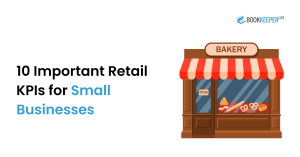The retail industry is fiercely competitive. To thrive, small businesses need to constantly analyze their performance and identify areas for growth. KPIs, or key performance indicators, are measurable factors that track a business’s health. By monitoring the right KPIs, small businesses can gain valuable insights and make data-driven decisions.
While there are many KPIs to consider, here are 10 crucial ones for small businesses in the retail industry:
1. Gross Margin
Profit is important, but it doesn’t tell the whole story. Gross margin, expressed as a percentage of sales, takes the cost of goods sold into account. This KPI helps determine reasonable markup prices and provides a clearer picture of a business’s profitability.
2. Retail Sell-Through Rate
This KPI measures how quickly inventory sells. It’s calculated by dividing the number of units sold in a given period by the initial inventory for that period. A high sell-through rate indicates efficient inventory management and reduces the risk of dead stock.
3. Year-Over-Year Sales
Tracking year-over-year sales growth is essential. However, for a more nuanced understanding, analyze this KPI alongside others. Identify which products are driving growth (or decline) to develop effective marketing, pricing, and ordering strategies.
4. Sales Per Square Foot
This KPI reveals how efficiently you utilize your retail space. It’s a good idea to measure this before and after a store redesign or layout changes. It can also indicate areas where staff performance can be improved.
5. Average Spend
This KPI encourages creativity in product placement, store layout, and upselling techniques. By measuring average transaction value and average units purchased, you can identify opportunities to increase customer spending.
6. Customer Conversion Rates
This KPI measures the percentage of customers who make a purchase. It reflects the effectiveness of in-store elements like customer service, store experience, and layout. A low conversion rate suggests a need to improve these aspects.
7. Inventory Turnover Rate
This KPI indicates how often inventory is sold and restocked. It’s calculated by dividing the cost of goods sold by the average inventory cost. An ideal turnover rate varies depending on the product category. Analyze this KPI to optimize stock levels and ordering frequency.
8. Product Return Rates
High return rates can signal issues with customer service, product quality, or return policies. By tracking return rates, you can identify areas for improvement and potentially implement a smarter return policy.
9. Shoppers to Staff Ratio
This KPI helps with strategic staffing to ensure adequate customer service while optimizing labor costs. It can be used in conjunction with conversion rates to determine optimal staffing levels.
10. Gross Margin Return on Investment (GMROI)
GMROI measures the profit earned based on the amount spent on inventory. A high GMROI indicates efficient inventory management and product selection. Industry benchmarks exist for GMROI, so you can use this KPI to optimize inventory and ordering.
Bonus KPIs
- Relative Market Share: This KPI helps you understand your position within your industry. It’s calculated by dividing your market share by the market share of the leading competitor.
- Percent of Returning Customers: Loyal customers are more likely to spend more and recommend your business. Track your returning customer rate to understand customer satisfaction and the effectiveness of your loyalty programs.
The Power of Point-of-Sale (POS) Systems
Manually tracking KPIs can be a time-consuming and error-prone process, especially for small businesses. A robust POS system can automate KPI calculations, generate reports, and provide valuable data visualizations. This frees up your time to focus on what matters most – running your business.
By tracking these KPIs and taking action based on the insights they provide, small businesses in the retail industry can make informed decisions, optimize operations, and achieve sustainable growth.


 :
:









